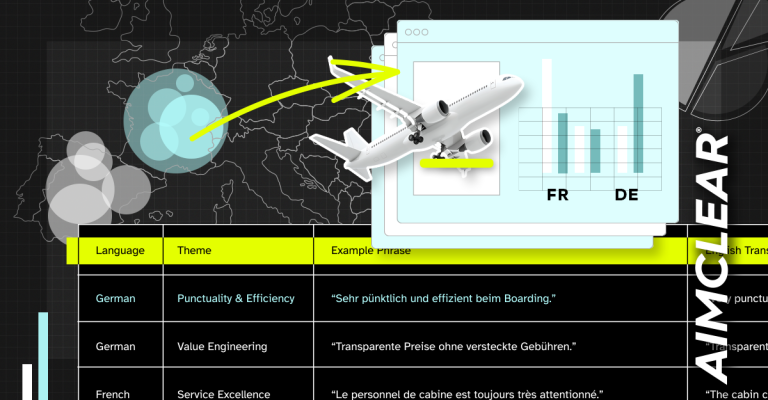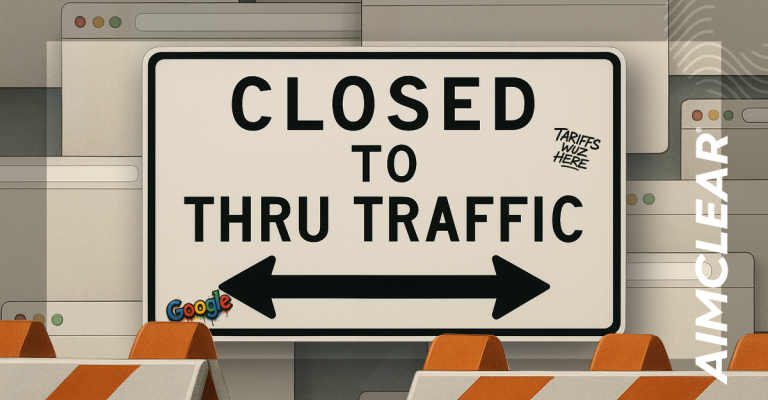
Welcome back to Day 2 of AIMCLEAR‘s #SMX East 2011 coverage! The heavyweight battle between SEO and PPC has long graced the stage at mainstream online marketing conferences. Organic optimization in the red corner, paid search in the blue corner – powerful opponents seemingly fighting for a greater stake of your company budget.
Despite the provocatively titled session, suggesting a gloves-off bloody-nosed to-the-victor-go-all-my-marketing-dollars type scenario, attendees often walked away with a deeper understanding of and respect for the powerful combined forces of PPC and SEO. Yes, speakers would make their case for one or the other, but in the end everyone would agree that it just doesn’t make good sense to have one without the other, and that the most companies integrate a healthy blend of both PPC and SEO to ensure sustainable success online.
It’s often all sunshine and pussy cats after the end of these sessions… but that harmony doesn’t always translate back in the office. Allowing intra-office competition between PPC and SEO teams is a surefire way to shoot your business in the foot, miss opporutnities, and make life shi more difficult.
Fortunately for marketers at #SMX East 2011, moderator Brad Geddes, Founder, Certified Knowledge, Q&A moderator Christine Churchill, President, KeyRelevance, and speakers Tim Mayer, Chief Strategy Officer, Trada, David Roth, Sr. Director, Search Marketing, Yahoo and… Brad Geddes again, were ready to set aside the debate and share profound tips for getting SEOs and PPCers to not only coexist peacefully, but learn from one another.
AIMCLEAR live-tweeted this lively Day 2 session via @beebow. Read on for the full effect.Brad took the stage and welcomed Tim, our first speaker.
“Search marketing has become the umbrella term across PPC and SEO,” Tim led off. People need to look at both these factors holistically.
Looking at the SERPs, PPC CTR = about 12% while SEO CTR = about 60-70%. Tim’s worked with many marketers who ask, “Why should we optimize to show the same result in organic if we’ve already showed it in the paid section?” Conversely, some SEOs complain, “I already appear in organic #1! Why should I spend money on PPC for that term?”
Aren’t these two examples of surefire cannibalization?
Nope. They’re not. Let’s look at the math.
- Incremental ad clicks from PPC and SEO together = 89% (based on a July 2011 study)
- Incremental clicks examples – Advertiser spends $1k / month, results in 400 organic clicks and 300 paid clicks.
- Incremental clicks example – Advertiser cuts ad spend to $0, results in 500 organic clicks and 0 paid clicks.
What Tim’s Learned From Managing Commerce Sites with SEO & PPC Team
- Common success criteria. Conversions/ROAs vs. # of referrals to a website.Ranking is nice, but the click is better! Important click determinants: KW title, branded URL, and KW in context in description.
A/B test your organic titles in PPC to see what works. Gem. Genius. Do it.
- Collaborative KW research. Determine where volume is in PPC to drive content generation efforts and SEO KW efforts.
- Examine site analytics for natural search to look for new KWs to test for PPC campaign.
- Use PPC and analytics to optimize landing pages. SEO traffic going to content-rich/low monetization content. Monetize more effectively with ads, create widgets to drive traffic into higher value areas of site, integrate & merchandise higher valued and relevant items. In summation, drive PPC traffic to A/B landing pages for quick iteration.
- Reduce impact of major changes. One box coverage, new design, site resign, new product launch, seasonal promotions & sales, etc. Ramp up PPC until SEO kicks in, then test with and without PPC. When your SEO and PPC teams communicate together, you can better manage the traffic & revenue flow from an overall basis.
- Segment traffic! Try different landing pages for different types of traffic. Direct traffic = navigation or branded terms, SEO, PPC, etc. Consider different monetization levels: Higher monetization = higher $/PV = higher bid.
Tim wraps up and turns it over to David Roth. On the menu: Discoverability, sharing the page, cross-channel data, & attribution. Here’s some high-level takeaways from this dense, insightful preso:
- Considering buying paid ads even if you rank well organically (for brand terms)?
- One approach:
- Target bran KW
- Baseline SEO traffic
- Buy the ad
- Alternate buying vs. not buying
- Be aware of cyclicality/seasonality
- Gather all the data you can,
Estimate CTRs - Use scatter plots to chart results
- In this example, when David bought the paid link, it increased the CTR on the organic listing.
Summary: Organic makes a difference. Fill in the gaps with paid. Paid vs. Organic is more about math than philosophy.
Brad (as a speaker…) was up next, to discuss the relationship between SEO & PPC with a rather literal metaphor.
What do 12 year olds do when they like someone? They sucker-punch them. In the beginning, when they were both “young,” SEO and PPC fought like two kids with crushes on one another. Over the years, they’ve grown up, and started dating. Eventually, they got engaged. Now, it’s time for them to get married. We need to marry SEO and PPC within our own companies and online marketing efforts if we want a happy ending.
“What is an ad?” Brad asks. It is a form of communication used to persuade an audience to take action. Guess what? That’s exactly what your compellingly-written organic listing does, too. Ergo, the goal of PPC and SEO is exactly the same. Why, then, all the talk about competition between the two?
[Br]advice for Leveraging PPC to test SEO
(That’s advice form Brad, get it?)
- Test Tags. Take your potential title tags, make them ad copy, test with PPC, see what yields a better CTR. Make the winners your SEO tags.
- (Note: If all you do is SEO, work with your paid search team – your approach to writing title tags may be slightly different than what it takes to make a good ad. Vice versa.)
- Test Homepages. PPC is great for homepage testing, too. Make potential homepages the landing for brand traffic in PPC. Which LP gets better conversions? Test and find out.
- (Note: This is where robots.txt files are essential. SEOs know this. PPCs might not. Make sure to block right pages so you don’t harm SEO efforts.)
- Test Templates. Use PPC to test site design templates. Paid search teams and SEO teams have to design together, because ultimately, these are not dedicated PPC pages. They’re test pages for SEO purposes.
Are you noticing a trend? In all of these scenarios, it is vital for the PPC team to work with the SEO team. Each is invaluable to the other. They are both completely involved with these tests.
Brad cruised through a heaping handful of examples showcasing SEO CTR, SEO conversion rate, PPC CTR, PPC conversion rate, and SEO+PPC CTR as well as SEO+PPC conversion rate, but they weren’t the easiest thing to capture on-the-fly. Suffice it to say – in pretty much every case, when SEO and PPC joined forces, the results were favorable, in every sense.
That about does ‘er, folks! Stay tuned for more coverage from #SMX East 2011, right here in AIMCLEAR blog.








